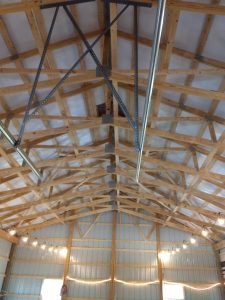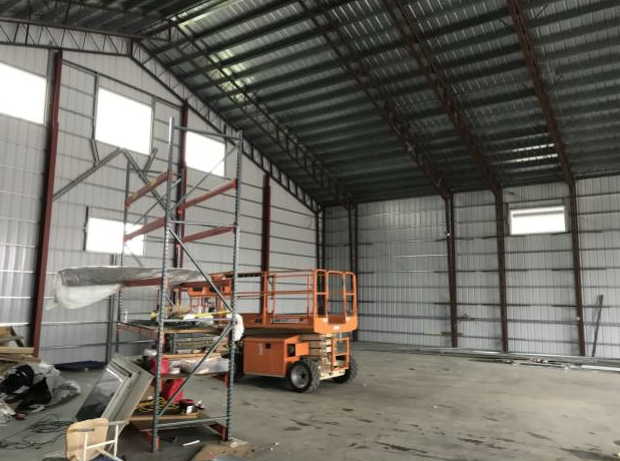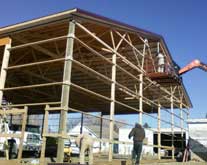Roof Truss Repair
A builder writes:
 “The previous owner of a pole building I’m working on cut out several internal webs from three consecutive roof trusses to create storage space in the attic. There’s no sign that this has caused any structural problems so far, but I’d like to replace the missing members and fasten them with plywood gusset plates and construction adhesive. Is this feasible, and does this sort of seat-of-the-pants field repair expose me to any legal liability?”
“The previous owner of a pole building I’m working on cut out several internal webs from three consecutive roof trusses to create storage space in the attic. There’s no sign that this has caused any structural problems so far, but I’d like to replace the missing members and fasten them with plywood gusset plates and construction adhesive. Is this feasible, and does this sort of seat-of-the-pants field repair expose me to any legal liability?”
An “arm chair engineered field repair” will expose the builder to liability, should the repair ever fail. Field truss repairs can be made, and they probably would resemble something like what has been suggested. Ideally, an engineer affiliated with the truss manufacturer which produced the trusses would design a suitable repair. But if the truss manufacturer is unknown or no longer in business, the builder should engage an engineer who would both sign off on the design, and inspect and approve the work afterward.
The best place to start is with the manufacturer of the connector plates used on the original trusses. Take pictures of the condition, along with close-up pictures of the connector plates on the trusses and send them to any truss manufacturer. They should be able to point the builder in the right direction.
A typical truss repair might call for a combination of dimensional lumber and plywood gussets “scabbed” beside the remaining web members to make up for the lost members. The repair design should include material dimensions for added members, plus a detailed fastener schedule showing the size, number, and placement of fasteners.
Regardless of the specific design details, under no circumstances should the builder take responsibility for the repair. The fact there have been no structural problems yet doesn’t mean there won’t be some down the road. This may not be enough in the event of high winds, a record snowfall, or a decision by the building owners to move all their old college textbooks into the attic.
Richard Feeley of Feeley Mediation & Business Law, a Marietta, Georgia law firm which provides legal counsel to remodeling companies, confirms a contractor should not attempt a truss repair without engineering support. “If you touch it, you own it,” he warns. A contractor who has not partnered with an engineer to make sure the truss repair meets code and complies with structural requirements is indeed liable, and the risk could be great. Liability could include not just property damage but personal injury if the truss system fails and someone gets hurt.
There can also be licensing implications. If, for example, the job is “permitted” and a building inspector finds after the fact an adjustment which required an engineered design was made.
Feeley points out another legal dimension contractors need to address as well: Be sure you cover the issue in your contract. “You need a change-order policy that covers unforeseen circumstances,” Feeley says. “If you find something that no one expected, you want to be sure you get paid for the work it’ll take to repair it.”
My best advice – don’t field modify any prefabricated roof truss, without adequate engineering.










You made a great point about how you might need a combination of lumber and gussets to make up for lost pieces. My husband and I are looking for a truss roof that we can have installed on our new home. We will keep these tips in mind as we search for a professional that can help us best.